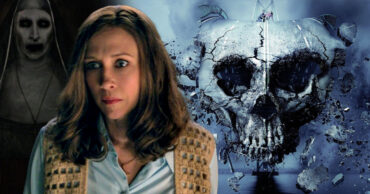In the riveting eco-horror drama Evil Does Not Exist, director Ryusuke Hamaguchi delves deep into the serene yet unsettling relationship between humans and nature. Set against the backdrop of a quaint village that epitomizes symbiosis with nature, Hamaguchi constructs a narrative that not only captivates but also sends a profound message about ecological balance and ethical conundrums faced by society.
Film’s Insight on Nature and Corporate Conflict
The story revolves around a small village where residents live in harmony with the environment, utilizing natural resources respectfully and sustainably. However, the tranquility is disrupted when a corporate entity plans to introduce a glamping site, aiming to offer city dwellers an escape into nature without foregoing luxury. This plan, however, threatens to disrupt the ecological balance and exploit the pristine environment for commercial gain.
The film showcases Hamaguchi’s skillful use of cinematography, where visuals are not just seen but felt. Scenes where the camera pans through the lush greenery enveloping characters convey a deep connection between humanity and earth, a recurring theme in Hamaguchi’s narratives.
Troubled Paradise and Human Choices
Notable scenes include discussions among villagers about how the proposed development could lead to environmental degradation. The dialogue is sparse yet potent, with each line peeling away layers of the characters’ internal conflicts and moral standings. Through these exchanges, Evil Does Not Exist explores broader themes of economic gains versus environmental sanctity.

The characters are portrayed as varied stakeholders in this impending change. From those who see it as an opportunity to boost economic activity to others who perceive it as a danger to their way of life and tradition. Choices made by these characters echo Ryusuke Hamaguchi’s contemplation on whether the essence of nature can be maintained amidst burgeoning capitalism. Each choice reflects deep-seated ideologies that drive decisions in business and conservation practices.
A Cinematic Ecomedia Critique of Corporate Exploitation
The narrative constructed by Hamaguchi is reminiscent of the classic eco-horror theme where nature retaliates against human follies. Yet, in Evil Does Not Exist, the approach is subtler. It challenges viewers to ponder over their own positions regarding sustainable living and corporate encroachments into untouched landscapes. Furthermore, the film serves as an ecomedia, subtly educating its audience through its serene yet somber storytelling style.

As quoted by Jordan Peele, Natural disasters are depicted as demons…
elaborates an intrinsic thread within many Japanese films which includes Evil Does Not Exist. This aligns with Hamaguchi’s non-linear storytelling where the ominous sense of foreboding is more psychological and nuanced compared to overt apocalyptic horror.
Visual Metaphors and Environmental Morality
The visual metaphors used by Hamaguchi often juxtapose man-made structures against backdrops of lush forests or clear waters, symbolizing the psychological and physical intrusions of human activities into natural realms. The environmental message is powerful yet quietly delivered through whispers of imagery and interactions rather than shouts of turmoil.

Ultimately, Evil Does Not Exist transcends genre definitions becoming a poignant study on conservation ethics in modern cinema. By deploying elements typical of Japanese filmmaking such as empathy for reflective silence and integrating eco-psychological elements into its fabric,>
 Follow Us
Follow Us





